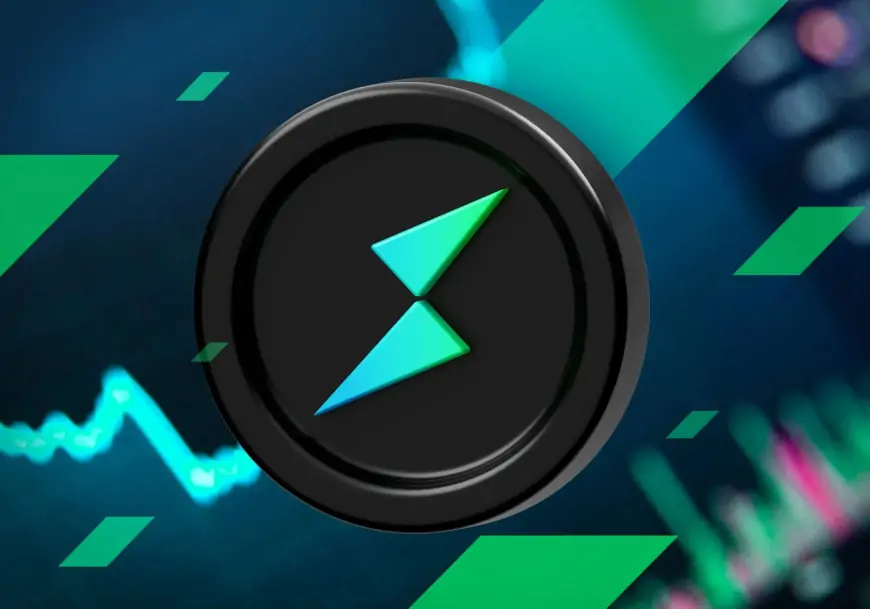What is THORChain (RUNE) and how does it work? Exploring its role in the future of decentralized finance
Explore THORChain (RUNE), a decentralized finance protocol facilitating cross-chain swaps and liquidity provision across blockchain networks.

What is THORChain (RUNE)?
THORChain is a decentralized protocol designed with cross-chain architecture, enabling users to swap tokens across different networks such as Bitcoin and Ethereum seamlessly.
Cryptocurrency traders and investors use decentralized exchanges to trade between cryptos like Bitcoin and Ethereum, a task that native networks cannot facilitate. THORChain addresses this by creating an interoperable environment where users can directly exchange various cryptocurrencies within the protocol, eliminating the need for intermediaries.
The project's primary objective is to enhance liquidity for all supported cryptocurrencies, contrasting with fragmented markets lacking liquidity for traders seeking to exchange different cryptos without relying on central authorities.
Additionally, THORChain allows users to earn yields by participating in decentralized exchange activities, such as providing liquidity to pools where they can borrow cryptocurrencies promptly.
How does THORChain work?
THORChain employs a protocol akin to Bancor DEX's continuous lending pools to facilitate cross-chain exchanges of non-native tokens. These tokens, along with the native token RUNE, are pooled together in liquidity pools.
When a user initiates a trade, such as exchanging between two non-native assets, the system automatically swaps one token for RUNE and then swaps RUNE for the other token. This double-swapping mechanism with instant execution enables non-custodial exchanges on the THORChain protocol.
Simultaneously, users have the option to deposit their funds into liquidity pools where others can borrow them, allowing them to earn yields based on their deposited amount. These liquidity pools are established by operational nodes. Nodes also validate swaps and receive incentives for this service. The THORChain protocol operates on the Proof of Stake consensus mechanism, necessitating the staking of native RUNE tokens.
Validator spots range from 100 to 300, with nodes required to bond a minimum of 1 million RUNE to secure a validator spot. Nodes are hosted on an additional layer that provides enhanced security and facilitates network management
Who founded THORChain? (Exploring the history of THORChain's creators)
THORChain was founded by an anonymous team to preserve the protocol's decentralized nature, resulting in no official foundation, development team, or CEO. The project's creator also remains anonymous. Development activities are conducted transparently on GitHub, where new updates and enhancements are regularly posted.
The team focuses on enhancing network functionality and value through code contributions, while the operational nodes (Nodes) play a crucial role. Nodes rely on stakers who support them through staked RUNE tokens, and in turn, nodes serve the network participants. Stakers contribute liquidity to the THORChain exchange market, where swappers pay fees for transactions and borrowed assets, sustaining the protocol's economic ecosystem.
What sets THORChain apart from others?
THORChain stands out due to its innovative liquidity approach, employing a fee structure that mitigates slippage and minimizes the risk of liquidity loss, including impermanent loss. Its user-friendly interface is driven by a sophisticated blend of technologies, facilitating seamless cryptocurrency exchanges.
As a non-profit organization, THORChain's anonymous team does not retain any RUNE funds collected as fees on the protocol; instead, all RUNE spent on fees is redistributed to network participants. Moreover, THORChain enables near-instantaneous token exchanges across major platforms such as Ethereum, Bitcoin, Binance Smart Chain, Litecoin, and others.
What contributes to the value of THORChain?
THORChain derives its value from its technical elements, technology, capacity, and utility, which attract cryptocurrency users to its network. Updates, upgrades, and roadmap advancements also enhance THORChain's value as a project. For example, the launch of the THORChain mainnet in April 2021 was a significant milestone that increased the project's value.
However, THORChain's intrinsic value may not always align with its market price, primarily due to volatility. The price of RUNE can experience trend reversals and unpredictable fluctuations, leading to rapid changes in its value over short periods.
What is the current circulating supply of THORChain (RUNE) coins?
Currently, there are 336,173,418 RUNE tokens in circulation out of a total supply of 500,000,000 RUNE. Similar to Bitcoin and many other cryptocurrencies, RUNE has a finite supply, meaning no new tokens will be created once the supply is fully issued. This limited supply serves as an anti-inflationary measure, potentially positioning RUNE as a viable long-term store of value.
The circulating supply of RUNE multiplied by its current market price determines its market capitalization. This metric not only ranks RUNE among other cryptocurrencies but also signifies its market dominance.
Other technical information
RUNE serves as the native token of the THORChain network, functioning as a versatile universal token that supports all network operations and protocol functions. It is utilized in governance, staking, bonding for validator nodes, and trading activities. Additionally, RUNE acts as an incentive within the system, rewarding node operators and stakers who contribute liquidity to pools.
To validate operations on the network, a consensus among two-thirds of validator nodes is required to secure the cross-chain bridge, facilitating the exchange of non-native assets. THORChain ensures the security of this validation process using Tendermint, a novel Byzantine Fault Tolerant protocol.












































